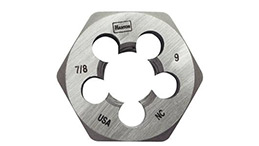
Dec . 25, 2024 13:22
Back to list
Precision Voltage Regulator Solutions for Enhanced Performance and Stability
Understanding Precision Voltage Regulators
Precision voltage regulators play a crucial role in electronic design, serving to maintain a stable output voltage despite variations in input voltage or load conditions. These devices are essential for ensuring the reliability and performance of various electronic circuits, particularly in sensitive applications like instrumentation, telecommunications, and aerospace.
What is a Precision Voltage Regulator?
A precision voltage regulator is a type of voltage regulator designed to provide a low output voltage variation, making it ideal for applications that require a steady voltage supply. Unlike standard voltage regulators, which may allow a significant range of voltage fluctuation, precision voltage regulators maintain tight tolerance levels, often within the range of a few millivolts.
The main goal of a precision voltage regulator is to ensure that the output voltage remains consistent, regardless of fluctuations in the input supply voltage or variations in the load that the regulator is driving. This stability is typically achieved through high-quality components and advanced circuit design, which allows the regulator to respond quickly to changes in load conditions.
Types of Precision Voltage Regulators
There are two primary types of precision voltage regulators linear regulators and switching regulators.
1. Linear Regulators These are simpler in design and provide a smooth output voltage. They work by dissipating excess voltage as heat, which can lead to inefficiencies, especially in applications requiring higher currents. However, they have better noise performance and are easier to implement for low-power applications.
2. Switching Regulators In contrast, switching regulators use high-frequency switching elements to convert input voltage to output voltage. They are more efficient than linear regulators since they do not dissipate as much energy as heat. However, they can introduce noise into the output signal, which may be detrimental in some precision applications.
Applications of Precision Voltage Regulators
منظم الجهد الدقيق

Precision voltage regulators are widely used in various industries
- Medical Devices In medical equipment, precision voltage regulation is critical for the accuracy and reliability of diagnostic and therapeutic instruments. - Telecommunications These regulators help maintain stable performance in communication devices, which demand consistent voltage levels to operate effectively.
- Embedded Systems For microcontrollers and other embedded systems, precision regulators ensure that the supply voltage remains within the tolerance levels necessary for reliable operation.
Benefits of Using Precision Voltage Regulators
1. Improved Accuracy Precision voltage regulators ensure that sensitive components receive the correct voltage required for optimal performance, leading to more accurate measurements and operations.
2. Enhanced Reliability By providing stable voltage levels, these regulators reduce the risk of component failure due to voltage spikes or drops, thus enhancing overall system reliability.
3. Better Noise Performance Many precision voltage regulators are designed to minimize noise, which is essential in high-frequency applications or where signal integrity is paramount.
Conclusion
As electronic devices continue to advance and become more complex, the demand for high-performance voltage regulation solutions will only increase. Precision voltage regulators stand out as key components in achieving the accuracy, reliability, and efficiency these modern systems require. Whether for medical instruments, telecommunications, or embedded systems, understanding the functionality and applications of precision voltage regulators is essential for engineers and designers aiming to develop cutting-edge electronic solutions. Their role in safeguarding the performance of delicate circuits cannot be overstated, making them indispensable in today’s technology-driven world.
Latest news
-
Safety Valve Spring-Loaded Design Overpressure ProtectionNewsJul.25,2025
-
Precision Voltage Regulator AC5 Accuracy Grade PerformanceNewsJul.25,2025
-
Natural Gas Pressure Regulating Skid Industrial Pipeline ApplicationsNewsJul.25,2025
-
Natural Gas Filter Stainless Steel Mesh Element DesignNewsJul.25,2025
-
Gas Pressure Regulator Valve Direct-Acting Spring-Loaded DesignNewsJul.25,2025
-
Decompression Equipment Multi-Stage Heat Exchange System DesignNewsJul.25,2025

